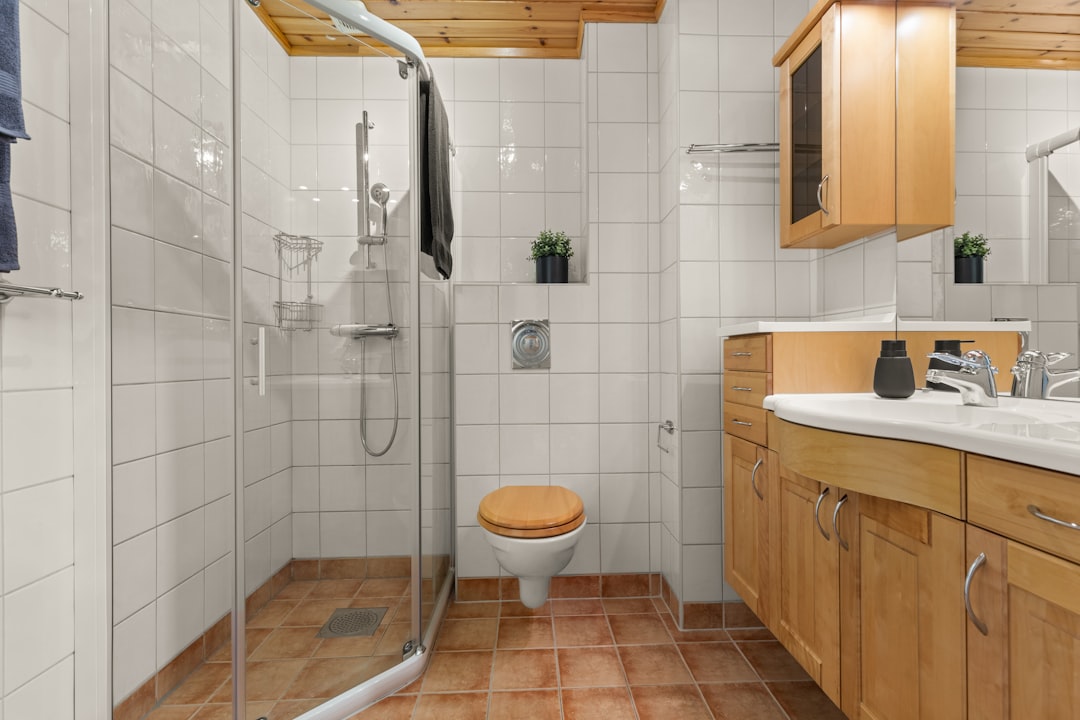Understanding the Real Cost to Install a Utility Sink
Installing a utility sink in a professional setting requires careful consideration of costs and logistics. The average cost for a full-scope utility sink installation ranges from $850 to $1,850. This includes labor, fixtures, supply lines, traps, venting adjustments, minor framing, and finish carpentry. Factors such as sink quality, distance to existing plumbing, and permitting requirements can influence the final price. Utilizing AI-driven estimates ensures accuracy and transparency in budgeting.
Average Price Range in Residential Construction
Across central Iowa, utility sink installations typically cost between $850 and $1,850. This range accounts for various factors including labor, materials, and local code requirements. Accurate estimates are crucial for maintaining budget integrity.
Six Key Cost Drivers
- Fixture selection: Acrylic laundry tubs are more affordable than cast-iron enameled basins.
- Faucet spec: Basic two-handle faucets are less expensive than high-arc sprayers with stainless supply lines.
- Plumbing distance: Longer runs to the main stack require more materials.
- Drain and vent upgrades: Local code may dictate the method, affecting costs.
- Finish carpentry: Custom cabinetry increases material and labor expenses.
- Permits & inspections: Fees in Des Moines range from $40 to $120.
Labor vs. Materials: Where the Money Goes
- Labor (45 – 55%): Licensed professionals handle plumbing, carpentry, and electrical work.
- Materials (30 – 40%): Includes sink, faucet, supply lines, and finish trim.
- Overhead & Profit (10 – 15%): Covers insurance, logistics, and contractor margin.
How CountBricks Shrinks the Unknowns
CountBricks replaces traditional quoting methods with data-driven insights:
- Voice-driven site capture: Use our app to document measurements in real time.
- Instant blueprint takeoffs: Detects plumbing lines and chase walls quickly.
- Live materials feed: Access current pricing from local suppliers.
- One-click quote documents: Generate proposals ready for e-signature.
Step-by-Step CountBricks Process
- Discovery call: Capture project scope and specifics.
- AI estimate: Receive a detailed cost breakdown.
- Material selection: See instant price changes within the platform.
- On-site verification: Confirm conditions and finalize start date.
- Installation & inspection: Licensed pros complete the work.
- Final invoice: Transparent billing with no surprises.
Money-Saving Strategies without Cutting Corners
- Choose PEX over copper where allowed to reduce costs.
- Install a single-handle faucet to save on labor.
- Consider an AAV for complex venting situations.
- Bundle small plumbing jobs to save on mobilization costs.
- Use real-time price alerts for fixture purchases.
Hidden Costs to Watch For
- Asbestos or lead abatement in older homes.
- Foundation drilling for below-slab connections.
- Electrical upgrades for nearby pumps or heaters.
- Demolition and haul-off for existing structures.
Why Des Moines Homeowners Choose CountBricks
- Rapid estimates: Receive quotes quickly.
- Local expertise: Knowledgeable tradespeople familiar with local codes.
- One-stop shop: Comprehensive project management.
- Flexible financing: Payment options available.
Case Snapshot: Beaverdale Basement Upgrade
The Harper family received an accurate estimate and timely installation, demonstrating the effectiveness of data-driven estimating.
Getting Started
Visit CountBricks.com to start your project with a precise estimate.
Digging Deeper: Fixture Choices and Budget Impact
Choosing the right fixtures can significantly impact your budget. CountBricks categorizes fixtures into three tiers to help you make informed decisions.
Tier 1 – Budget-Friendly Acrylic Basins
- Average fixture cost: $110
- Lightweight and easy to install
- Ideal for basic utility needs
Tier 2 – Mid-Range Polypropylene Cabinet Sets
- Average fixture cost: $285
- Includes integrated storage
- Suitable for mudrooms
Tier 3 – Premium Cast-Iron or Stainless Tubs
- Average fixture cost: $600+
- Durable and resistant to chemicals
- Perfect for heavy-duty use
Pro Tips from CountBricks Installers
- Add quarter-turn shut-offs for easy maintenance.
- Use a high-arc faucet for versatility.
- Connect an overflow hose to prevent flooding.
Leverage CountBricks Financing
Manage unexpected costs with flexible financing options through CountBricks Pay. Split your invoice into manageable installments without project delays.
Next Steps
- Log in to your CountBricks dashboard or create an account.
- Select "Plumbing Upgrade" and provide project details.
- Receive a tailored estimate and schedule availability.
- Approve and let our professionals handle the rest.
CountBricks transforms construction projects into a seamless experience. Join the community of satisfied homeowners today.

